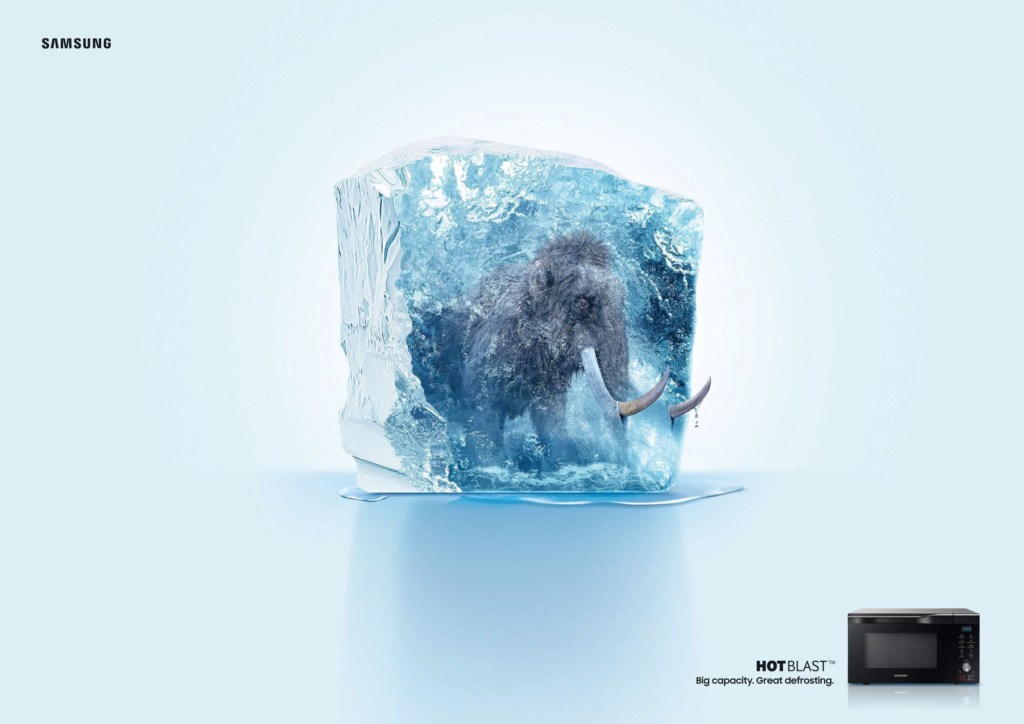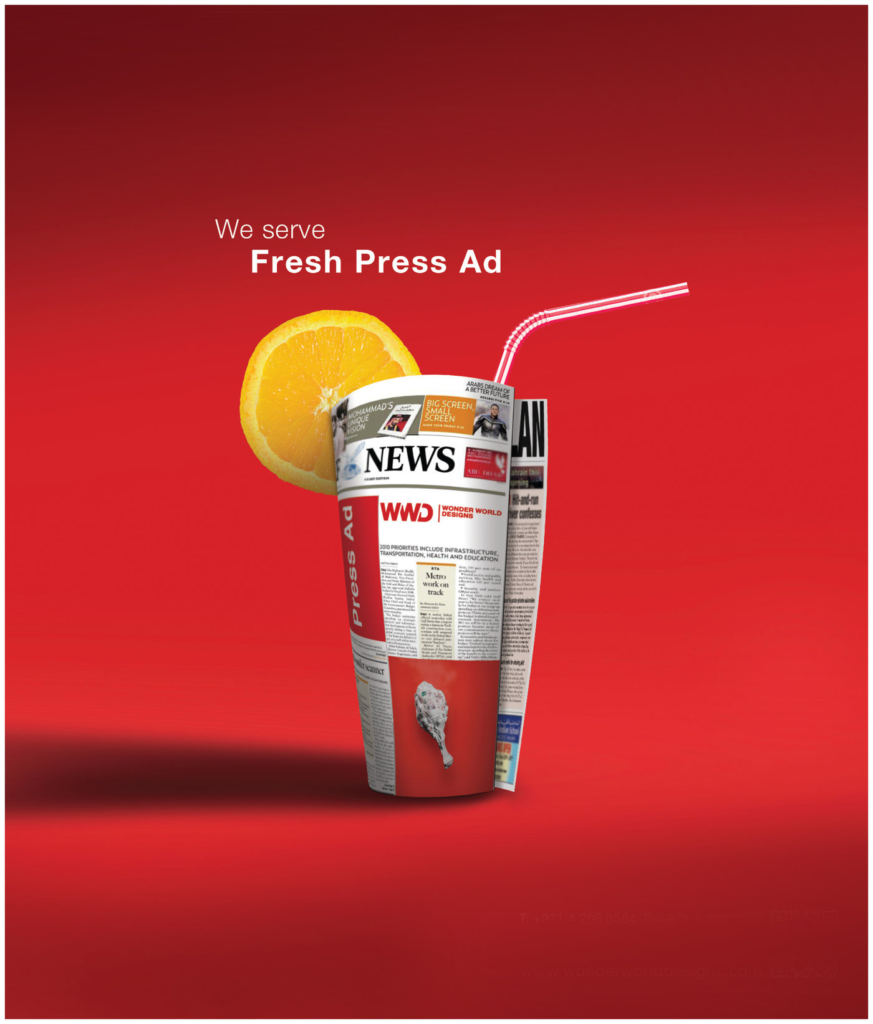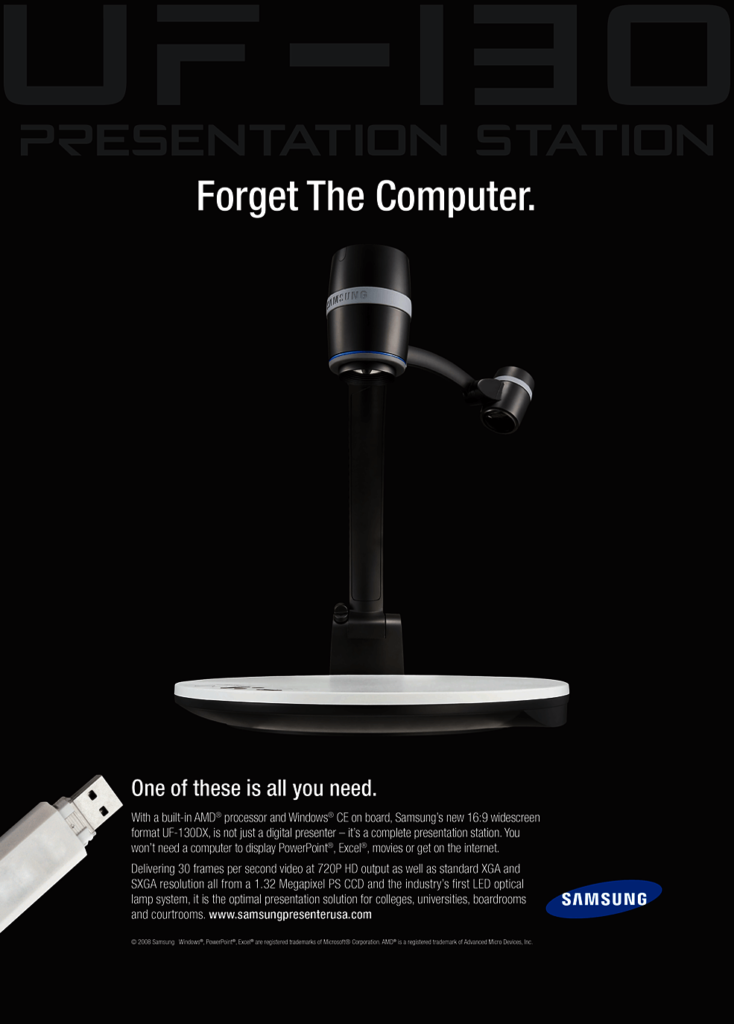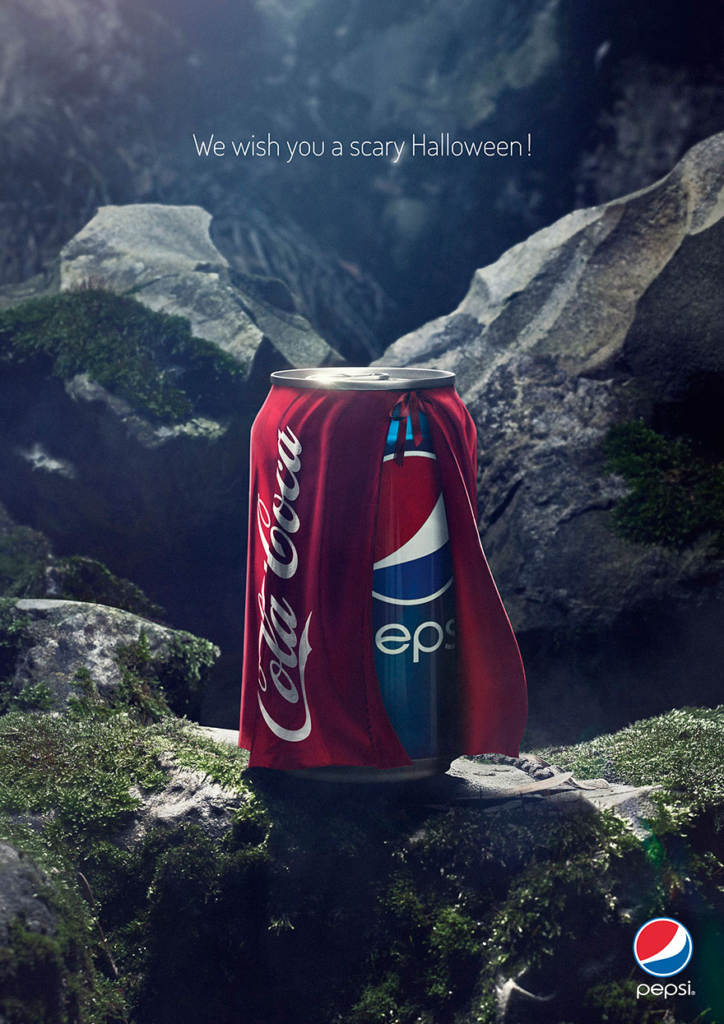Print advertising refers to any form of advertising distributed through print media like newspapers, magazines, brochures, flyers, billboards, and more. Even with the rise of digital advertising, print ads are still a popular and effective way to reach target audiences and promote brands.
In this comprehensive guide, we’ll cover everything you need to know about print advertising – featuring detailed definitions, an array of types and formats, including best print ads and clever print ads – real-world examples, advantages of print advertising, statistics on effectiveness, and tips for shaping successful print campaigns.
Whether you’re looking to get started with print advertising or aiming to leverage it further, this comprehensive guide will equip you with the know-how to effectively integrate the print advert as part of your omnichannel marketing strategy.

What is Print Advertising?
Print advertising is a type of advertising that uses physical, printed media like newspapers, magazines, brochures, catalogs, flyers, postcards, billboards, transit ads and more to deliver marketing messages to consumers. Being one of the most traditional forms of advertising, print advertising may be old, but it has remained popular and influential for hundreds of years.
- Print ads can include a wide range of formats from classified ads, display ads, inserts, catalogs, brochures, posters, billboards and direct mail pieces.
- One key attribute of print advertisements is that the advertising medium is physically printed and disseminated to a target audience.
- Print advertising is one strategy businesses use to present their product or service, along with special offers, deploying creative images and text to produce the best print ads.

Some key benefits of print advertising:
- Tangible – readers can hold and interact with the ad.
- Captures attention – print ads stand out against clutter.
- Trust and credibility – readers still trust newspapers and magazines.
- High visual impact – allows for bold, colorful creative.
- Longer shelf life than other mediums.
- Hyper local targeting.
Despite the continued rise of digital marketing, print advertising is still a core part of many omnichannel marketing campaigns today. It continues to be an effective way to reach specific local audiences, tell brand stories, and drive in-store traffic and sales. In fact, print advertising accounts for around 8% of overall advertising spend in the US as of 2023, demonstrating its enduring value. Skillfully combining print ads alongside digital channels gives marketers the best of both worlds.
Brief History of Print Advertising
Print advertising has a very long and evolved history:
- 15th century – The earliest examples of print ads are seen in the form of handbills and posters.
- 17th century – Newspaper advertising emerges in publications like The London Gazette.
- Late 1700s – Magazine advertising begins, with ads featured in titles like The Gentleman’s Magazine.
- 19th century – Image-based ads grow with advancements in lithography and typesetting. National brands use print ads.
- Early 20th century – Color printing takes off, bold graphics and illustrations define print ads in this era.
- 1960s – Creative advertising agencies push innovation in print ad design and copywriting.
- 1970s-1980s – Celebrities and sex appeal become common in print advertising themes.
- 1990s – Irony, minimalism and controversial themes become popular in print ads.
- 2000s onwards– Digital marketing rises but print advertising remains an important medium.
As this timeline shows, print advertising has evolved dramatically over the centuries while retaining effectiveness across eras. Even the early handbill ads generated brand awareness. Modern print advertising has become more visually dynamic but still leverages core principles of great design and messaging crafted for the medium.

Digital vs. Print Advertising
Both digital and print advertising platforms have their own advantages and best use cases:
Digital/ Online advertising provides:
- Broader reach – can access larger geographic and demographic audiences online.
- Targeting precision – advanced targeting options using consumer data.
- Low cost – digital ads have low incremental cost per impression.
- Measurable ROI – responses can be tracked in real time.
Print advertising provides:
- Brand building – print ads inspire greater brand loyalty and trust.
- Tactile experience – physical ads make more sensory and emotional connections.
- Local reach – community newspapers and publications tightly target by zip code.
- Demographic targeting – magazines reach specific consumer segments deeply.
- High visibility – larger visual impact with bold graphics and text.

In today’s marketing environment, best results come from utilizing both digital and print advertising channels in an omnichannel approach. Digital provides scale while print drives deeper engagement.
Different Types of Print Advertising
There are a wide variety/ forms of print advertising formats available to businesses and marketers including:

Newspaper Advertising
From classifieds to full page ads and inserts, newspaper advertising allows advertisers to reach local audiences in specific geographic areas.
- Classifieds – Small text ads grouped by category (jobs, real estate, autos, etc). Low cost but effective for hyper-local lead generation.
- Display ads – Graphical ads that can be full page, half page, quarter page, etc. Bigger sizes allow for impactful storytelling.
- Inserts – Pre-printed circulars and flyers distributed in the paper. Include coupons, sales promotions, etc.
- Advertorials – Advertisement content designed to mimic newspaper editorial content.
Newspaper advertising remains a $4.7 billion market in the US as of 2022. It provides extensive local reach, with 69% of adults reading a print newspaper each week. For advertisers wanting to promote products, services or events to a local market, newspaper ads are still one of the best ways to target by zones in Qatar.

Magazine Advertising
Advertising in industry trade publications or consumer magazines allows for targeting readers with shared interests and demographics. Most ads are full page, but other options exist:
- Full page – inside front/back cover, opposite content page, etc.
- Double page spread – across facing pages for maximum visual impact.
- Back cover – prime spot with high visibility.
- Inserts – cards, samples or brochures bound into the magazine.
- Blow-in cards – mini flyers inserted and fall out when opened.
- Belly band – branded wrap-around ad covering the magazine.
- Outserts – booklet or mini brochure poly-bagged to the magazine.
- Post-its – branded sticky notes attached to ads.
When executed well, magazine or newspaper ads make a big impression on readers. It’s crucial to match the ad creative, message and offer to the right magazine audience. This is why niche trade journals can provide such an efficient way to target B2B customers. Consumer magazines with very defined reader demographics also enable precise targeting.
In 2021, over $13.5 billion was spent on magazine advertising in the United States. Large consumer magazines can reach millions of readers per issue. But specialized trade journals have lower circulation which offers ultra targeted exposure to specific industry professionals.

Direct Mail Advertising
Direct mail encompasses print advertising sent physically to a targeted mailing list. This includes postcards, catalogs, brochures, coupons, product samples and sales letters. Direct mail enables personalization of offers and messaging.
Every Door Direct Mail from the postal service makes it easy to target households in chosen zones. Direct mail campaigns can be customized based on consumer data like demographics and purchase history. Dynamic print technology now enables personalized elements like the recipient’s name right on the mailer.
According to Data and Marketing Association’s (DMA) latest statistical fact book, in 2021 direct mail advertising accounted for around $10 billion in annual spending. Companies use direct mailers to acquire new customers, retain existing ones, build loyalty and track the effectiveness of offers.

Out-of-Home Advertising
Out-of-home advertising (OOH) includes any ads placed in public spaces with high visibility and foot traffic. Common OOH formats include:
- Billboards – Digital and static roadside billboards target drivers.
- Posters – Ads on bus shelters, airports, malls, on buildings and more.
- Transit advertising – Ads placed inside and on public transportation like buses, subway cars, taxis.
- Street furniture – Ads on bus stops, kiosks, benches and other public fixtures.
These OOH ads provide broad reach and high repeat impressions as audiences pass by the same locations frequently. Out-of-home ads are viewed as consumers go about their daily routines, running errands and commuting. OOH advertising spent reached $8.6 billion in 2021 because of its power to reinforce messages and reach masses.
Point-of-Sale Advertising
Also called point-of-purchase advertising, this involves print signage, displays, promotional items and more placed within retail stores or service businesses. The goal is to catch consumer eyeballs and influence purchasing behavior at the point of decision.
Examples include:
- Posters – Large format ads mounted in-store.
- Signage – Branding, wayfinding, window, counter signs.
- Display racks – Free standing branded product racks.
- Hanging signs – Above specific aisles or sections.
- Floor graphics – Brand messaging on floor mats or as standalone visuals.
- Counter cards – Small tabletop signage near checkout areas.
- Branded receipts and shopping bags.
Point of sale print advertising works hand-in-hand with sales and promotions to motivate immediate purchase. Yet it also builds consistent brand exposure over time. Print advertising within a retailer reaches shoppers when they are primed to buy, demonstrating that print media still retains domain in the age of digital advertising.

Benefits or Advantages of Print Advertising
There are some distinct advantages to using print advertising that digital channels cannot always replicate.
Builds Trust
Consumers see newspapers and magazines as more credible sources of information, viewing their content as high in journalistic integrity. Ads placed alongside trusted editorial environments benefit from this halo effect. Surveys show printed ads generate more consumer confidence and belief compared to similar digital ads.
Local Targeting
Through placements in regional newspapers, city guides and local store distribution, print advertising can micro-target audiences by zones. Television and digital channels are very broad in comparison. Print enables granular localization.
Tactile Experience
Physically holding and interacting with print ads stimulates more of the senses which leaves a greater impression. The look, feel, textures and even scents of print ads prompt stronger emotional responses. Digital content elicits less sensory reactions from audiences.
Captures Attention
In a sea of digital distraction, print ads stand out because of their physicality. Readers tend to spend more time with print content versus scrolling quickly online. Print ads also avoid ad blockers which are hindering digital.
Brand Building
Print creates positive brand associations and loyalty with readers in ways digital cannot always match. It tells brand stories with compelling creative that is often given more consideration than digital ads which are easy to ignore.
Demographic Targeting
Print vehicles like industry trade journals and consumer magazines provide extremely targeted access to specific niches and demographics. Online channels cast a wider but less focused net. Print enables true precision.

High Production Values
Print media allows for high quality photography, vivid color reproduction, attention-grabbing dimensions and shapes. Die-cuts, coatings and textures add further interest. Online ads are limited by technical constraints of the web.
Continued Relevance Among Key Segments
Despite younger demographics shifting to digital content, broad audiences still engage print media. For example, Baby Boomers and older Gen X represent huge buying power, and still prefer print. Reaching these lucrative segments works best in print.
Tracking and Measurement
Digital has the edge for immediate response measurement. But print is now evolving measurement capabilities through promotional codes, QR codes, unique URLs and more. Marketers can quantify print results.
While digital channels provide scale, print delivers the power of focused targeting and greater resonance with audiences. The two work together synergistically. Print strengthens brand identity and relationships that convert down the funnel.
But why exactly does putting words and images on paper prompt greater emotional response and recall from readers? There are scientific reasons print makes such an impression.

The Psychology and Science of Print Advertising
Research reveals how print advertising elicits greater emotional processing and memories from readers compared to digital:
Slowing Down Cognitive Processing
Reading from a physically printed page slows down the speed of information intake. Taking more time strengthens memory encoding and comprehension. Online skimming is more shallow.
Tactile Interactions Increase Engagement
Touch and feel stimulates the mind’s sensory cortex unlike staring at pixels. Physical paper ads enable interaction by holding, folding, creasing – deepening learning.
Less Digital Distraction
No popups or links to lure attention away from the ad itself. Full concentration on the print piece drives deeper cognitive focus.
Avoiding Screen Fatigue
Print avoids straining the eyes by being illuminated from ambient light versus digital sources. This reduces fatigue and friction.
Establishing Trust
Seeing an ad in a printed publication seems to lend it more credence and authority. Print environments imply editorial standards.
Appealing to More Senses
Print ads can utilize textures, coatings, scents and dimensional formats for multi-sensory impact. Online is limited to visual and audio impact.
Neuroscience and biometrics data on emotional responses continues to show why certain print ads evoke stronger feelings. These reactions form favorable associations between a brand and consumer. Print establishes bonds digital cannot always achieve.
Capitalizing on the unique benefits of print advertising ultimately comes down to smart creative strategies and execution.

Examples of Effective Print Ads
Now let’s examine some historically impactful and award-winning print advertising examples. Analyzing why these ad creatives were so successful provides lessons for producing compelling print ads.
De Beers “A Diamond is Forever”
This campaign launched in 1948 defined diamonds as the ultimate symbol of love and commitment. Exquisite imagery of romantic couples along with aspirational copy cemented the idea that “a diamond is forever.” The potent messaging transformed diamonds from luxury items into relationship necessities, driving massive sales for De Beers.

Volkswagen “Lemon” Billboard
This simple 1959 billboard ad showed nothing but a bright yellow VW Beetle with the bold headline “Lemon.” The tongue-in-cheek headline promises exceptional car quality and reliability by assuming the exact opposite. Volkswagen’s willingness to poke fun at themselves made the ad memorable.

Absolut Vodka Print Ads
This iconic print ad campaign stretched across 25 years. Photographer Steve Bronstein captured over 1500 distinctive ads, always featuring the Absolut bottle in creative and unexpected ways. The visual brilliance made Absolut top-of-mind with audiences who eagerly awaited new editions.

Nike “Just Do It”
Inspiring black and white images of athletes matched with the commanding three word tagline took Nike’s brand to new heights. The campaign focused on the grit, passion and determination of sports. The excellence portrayed translated into aspirations linked to Nike in consumers’ minds.

Apple “Think Different”
Launched in 1997 after Steve Jobs’ return, “Think Different” was a rebellious call for nonconformity. It featured black and white photos of visionaries like Einstein with arresting copy that broke rules.

The edgy tone aligned Apple with changing the world.
Got Milk?
This famous tagline campaign made milk desirable again by branding it as the ultimate thirst quencher. Clever photos put celebrities sporting milk mustaches while struggling with cookie or cake in funny predicaments. The strategy made milk a cultural icon.

So why did these varied ads succeed and become touchstones? While execution and context differ, shared traits make them effective print advertising:
- Creative Hook – An intriguing headline, image, design or message that instantly captures attention.
- Relevance – Tapping into a cultural moment, consumer need or larger narrative.
- Personality – Establishing a consistent voice, look and feel that uniquely represents the brand.
- Storytelling – Conveying an engaging story or scene, not just information.
- Emotion – Images, words and details that connect viscerally with the target audience.
- Memorability – bold visuals, typography and phrasing that sticks in the brain.
These principles of strategic messaging, imaginative art direction and smart copywriting can guide any brand’s print ads. Results come down to inspiration meeting thoughtful planning.
Tips for Creating Successful Print Ads
Here are some proven best practices for developing effective print advertising campaigns:
Define Campaign Goals and KPIs
Begin by setting clear objectives and choosing metrics to gauge ROI. Is the aim to drive site traffic, increase brand favorability, generate leads or boost sales? Trackable KPIs like promo code redemptions or special landing page visits will determine print ad success.
Research the Audience
Know your target consumer deeply including demographics, media habits, needs and interests. Develop print ads tailored to who they are, not just what you want to say. Make messaging immediately relevant.
Strategize Ad Content and Design
With audiences and goals defined, craft concepts and copy that will resonate. Brainstorm headlines and visuals around their preferences. Mirror the look of the publication where ads will run.
Allocate Budget Across Print Platforms
Determine how much to allocate to different print vehicles based on goals and audience research. Test a mix of newspapers, magazines, OOH, direct mail. See what performs best.
Personalize Messages When Possible
Leverage data and print technology to personalize direct mail pieces with recipient names and relevant offers. Personalized print converts much higher.
Be Brief But Compelling
Edit copy tightly and have a clear CTA, but make every word count. Engage readers without losing them.
Use Promo Codes or Special URLs
To track results, create special codes and landing pages exclusive to your print ads. Gauge response rates by platform and continue optimizing.
Partner With the Right Publications
Small niche magazines or papers may offer affordable access to very targeted groups. Know which specific print vehicles provide ideal exposure.
Work With a Print Marketing Expert
Specialty firms can handle everything from strategic development to printing and distribution. Their expertise improves results and cost efficiency.
This comprehensive checklist will guide your team in maximizing the impact of your print campaigns. By following proven print advertising strategies, your business can realize tangible ROI and branding benefits.

The Future of Print Advertising
Some may question what the future holds for print advertising and whether it can survive the digital revolution. However, many experts predict print will endure and evolve rather than face extinction:
Enduring Consumer Demand
Despite the proliferation of screens and devices, a large portion of audiences still prefer reading from print. For example, millennials make up 50% of print news readers because of the high trust it garners. Many consumers actively choose print as a break from digital overload.
Increased Personalization
Data and digital printing advancements now enable hyper-personalization of print ads with customized images, offers and messages tailored to the individual. Response rates to personalized print are over 5X higher on average.
Innovation in Print Ads
Creatives keep pushing the boundaries of print advertising with bold new formats like 3D print ads, die cuts, smart packaging, augmented reality and NFC tags. Print quality and effects continue to progress.
Premium Positioning
As digital video and display ads grow more saturated, print ads stand out as a high-quality and intimate way to reach audiences. Print retains a premium, prestige perception.
Measurable Medium
New technologies now allow marketers to track print ad performance through promo codes, NFC tags, image recognition and more. The historic analytics challenge of print is disappearing.
Renewed Relevancy
Print advertising highlights the tangible, human and lasting – all qualities increasingly valued by consumers facing tech overload. Brands who tap into these needs enhance print’s relevance.
Targeting Tech Improvements
Advances in database marketing and geo-targeting enable more precision in print distribution to desired households and areas. Waste is reduced.
Environmental Sustainability
Contrary to perceptions, print advertising can be eco-friendly through paper sourcing, renewable inks and efficient distribution planning to cut miles. Many brands have sustainability requirements.
Media Synergy
Print ads and digital work best together, maximizing reach across channels. Online can drive people to physical print pieces. The two amplify each other.
Far from fading away, print advertising is poised to enter a new renaissance period. As digital advertising grows more invasive with intrusive ads, print provides a refreshing oasis readers seek for quality content. The future belongs to marketers who can optimize a cross-channel approach mixing digital efficiency with print’s emotional power and tactility.
Rather than an either/or scenario, the most effective modern marketing strategies combine print and digital synergistically. Despite the persistent myth of print’s decline, it retains distinct competitive advantages that bolster any omni-channel campaign when applied strategically. For many leading brands, print still provides the heavy lifting of building trust, loyalty and engagement.

Final Thoughts
As this comprehensive guide illustrates, print advertising remains a vital and evolving marketing channel in a digital world. Used creatively and tactically, print ads can help brands make lasting connections and motivate desired actions from target consumers.
With so many print advertising formats and placement options available, companies can develop integrated campaigns customized to their goals, personas and KPIs. Coordinating print efforts with digital marketing enables maximum exposure and impact across channels.
The unique benefits of print advertising like trust building, tactile experience and focused targeting should anchor any smart omni-channel strategy in the future. Print advertising has stood the test of time and continues to offer characteristics no digital medium can fully duplicate.

Far from a relic, innovative print advertising approaches will propel brand stories long into the future by tapping into enduring human needs for connection, emotion and meaning. In a cluttered online landscape, compelling print advertising can still capture consumer imagination and loyalty.
While the platforms keep changing, quality creative, strategic message resonance and artful execution remain the eternal foundation for effective print advertising in any era. The core principles we analyzed will continue guiding brands to break through and forge bonds with their audiences.
Brandscape.shop – Qatar’s Print Advertising Company
Brandscape.shop have emerged as Qatar’s foremost experts in creative and results-driven print advertising services. As pioneers in the art of print, Brandscape.shop enable companies throughout Qatar to maximize their marketing reach and ROI through tailored print advertising campaigns.
With an innovative approach fusing data-led strategies with award-worthy creative, Brandscape.shop empowers brands across Qatar to optimize their print ads and promotions. Their masterful print advertising solutions showcase how this enduring and impactful medium remains vital for engaging audiences while complementing digital efforts.
According to their CEO, “Print advertising has a prestige and tactile power that online media simply cannot rival. By leveraging our deep expertise in print advertising, Brandscape.shop helps elevate our clients’ brands and foster lasting connections with their customers.”

Unlocking Print’s Potential
Print advertising today is far more advanced than many marketers realize. Brandscape.shop shows clients how to unlock the full potential of creative print as part of their 360-degree marketing mix in Qatar’s advertising landscape.
Targeting – Brandscape.shop leverage database marketing techniques to hyper-target print campaigns reaching their client’s best customers.
Personalization – Every direct mail piece can be dynamically personalized at scale with tailored images, offers and copy matched to the recipient.
Performance Tracking – Response rates to print promotions are easily measured through promo codes, QR codes and niche landing pages exclusive to the print ad.
Creative Innovation – Brandscape.shop constantly pushes the boundaries, implementing 3D print ads, AR, NFC tags and tactile techniques that dazzle audiences.
Print + Digital Synergy – Print and online efforts are planned holistically, with each medium amplifying the other’s strength for the brand.
Their consultative approach means exploring which specific print formats and channels will best achieve the client’s KPIs such as increased site traffic, greater brand awareness or more leads.

Award-Winning Print Advertising Services
Brandscape.shop have been recognized for print advertising excellence throughout the state of Qatar. Their work combines compelling art direction, copywriting and strategic messaging crafted specially for each brand they partner with to capture the attention of their target market.
Services offered include:
- Print Advertising Campaign Strategy
- Concept and Design of Print Ads
- Direct Mail Advertising
- Newspaper or Magazine Advertising
- OOH/Billboard Advertising
- Brochures and Catalogs
- Retail POS Print Marketing
- Personalized Print Ads
For companies wanting to harness the power of print advertising in Qatar, Brandscape.shop are the proven experts who make it happen. Their passionate team keeps print advertising thriving even in the digital age.
To discuss a high-impact print advertising campaign tailored for your brand’s objectives, schedule a strategy session with Brandscape.shop today.


Leave a Reply